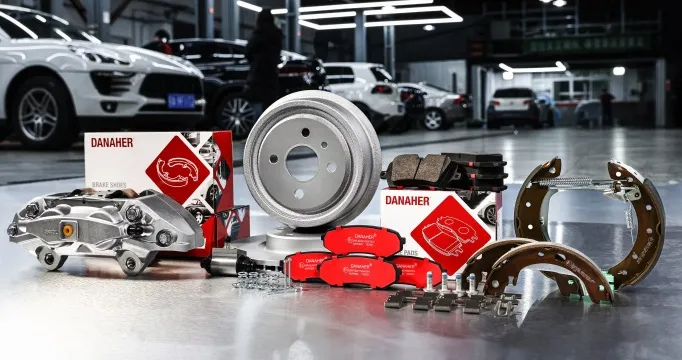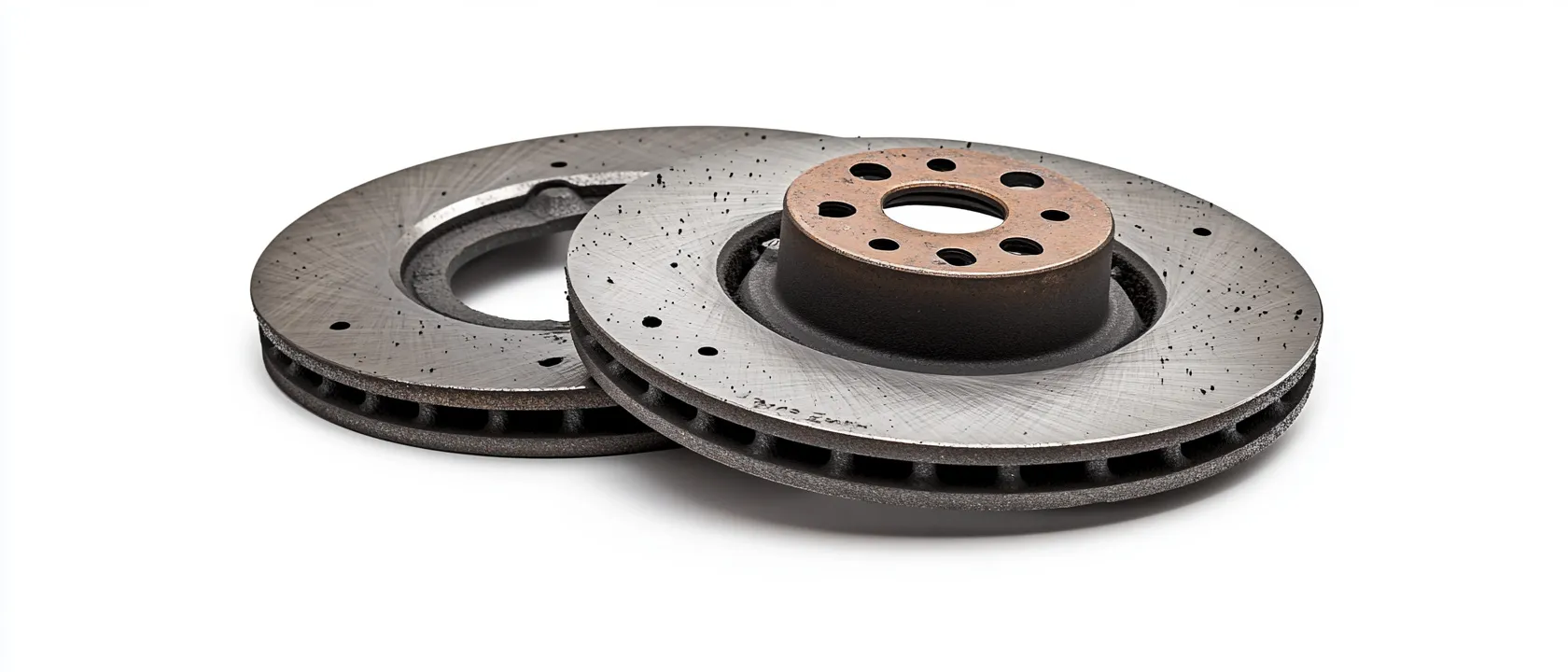Braking system performance represents perhaps the most critical yet frequently overlooked safety component in modern vehicles, where failure or inadequate performance can transform routine driving scenarios into potentially catastrophic situations with minimal warning or recovery opportunity. Unlike more visible vehicle modifications where performance improvements create immediately noticeable changes, brake pad selection exists in a nebulous territory where marketing claims often outpace objective performance data, and price differences exceeding 300% between economy and premium options leave consumers questioning whether significant safety advantages truly exist or merely reflect brand positioning and profit margins. As manufacturers across diverse price tiers make increasingly ambitious claims regarding stopping distance, fade resistance, and durability, a fundamental question emerges for vehicle owners making critical safety decisions: which brake pad brands genuinely deliver measurable performance advantages through sophisticated friction materials, thoughtful engineering, and consistent quality control that translate into meaningful stopping power under emergency conditions, rather than merely commanding premium prices through marketing claims or superficial appearance differences that fail to provide substantive safety benefits when subjected to rigorous, standardized testing under diverse driving conditions?
To provide definitive answers beyond marketing rhetoric, this analysis examines the actual performance capabilities of leading brake pad brands across multiple vehicle applications. Through systematic evaluation of stopping power, fade resistance, lifespan, noise characteristics, and value proposition, this comprehensive assessment reveals which manufacturers truly deliver on their promises—providing essential guidance for consumers seeking genuine braking performance rather than paying premium prices for marginal benefits.

Understanding Brake Pad Performance: Beyond Basic Friction
Before examining specific brands, understanding the fundamental principles governing effective brake pad performance provides essential context for evaluating manufacturer claims and design approaches.
The Braking Performance Matrix
Effective brake pads balance multiple performance dimensions simultaneously:
Primary Stopping Power Factors affecting immediate braking effectiveness:
- Initial bite characteristics determining responsiveness
- Friction coefficient stability across temperature ranges
- Pressure modulation linearity allowing precise control
- Surface area utilization efficiency maximizing effective contact
- Pad-to-rotor compatibility optimizing friction pairing
Heat Management Elements influencing sustained performance:
- Thermal capacity absorbing braking energy without degradation
- Heat dissipation efficiency preventing temperature accumulation
- Fade resistance characteristics maintaining performance when hot
- Recovery behavior after extreme temperature exposure
- Thermal expansion control preventing physical dimension changes
Environmental Adaptability across diverse conditions:
- Cold performance capabilities during initial brake application
- Wet weather characteristics maintaining friction when damp
- Temperature range effectiveness across climate variations
- Dust and contaminant resistance preserving performance
- Break-in period requirements reaching optimal performance
Secondary Consideration Variables affecting ownership experience:
- Noise production characteristics under various conditions
- Vibration damping capabilities preventing feedback
- Rotor wear impact affecting overall system longevity
- Dust generation tendencies influencing wheel appearance
- Environmental compliance regarding copper and heavy metals
These interrelated performance factors explain why comprehensive brake pad evaluation requires sophisticated testing beyond simple stopping distance measurement—with optimal products balancing multiple performance dimensions rather than excelling in isolated metrics potentially at the expense of overall braking safety.
Common Misconceptions in Brake Pad Evaluation
Several persistent myths often distort brake pad assessment:
Price-Performance Linearity:
The assumption that brake performance increases proportionally with price throughout the entire price spectrum ignores the substantial diminishing returns typically occurring beyond mid-range price points—where performance increases of 3-5% may command price premiums of 50-100%.
Race Pad Superiority:
The belief that race-oriented compounds necessarily provide superior street performance disregards their specialized design for specific temperature ranges and operating conditions often poorly matched to daily driving—resulting in compromised cold performance, excessive noise, and accelerated rotor wear despite theoretically higher maximum friction coefficients.
OEM Quality Consistency:
The assumption that original equipment manufacturer pads necessarily represent the optimal design rather than frequently reflecting cost-constrained compromises balancing adequate performance with manufacturing economy and noise reduction prioritization often at the expense of maximum stopping capability.
Dust as Performance Indicator:
The misconception that brake dust indicates superior stopping power rather than simply reflecting specific compound characteristics and wear patterns—with some high-performance formulations generating minimal dust while others with moderate performance creating significant residue.
Universal Formulation Effectiveness:
The belief that a single “best” pad compound exists rather than recognizing the application-specific nature of friction materials—where driving style, vehicle weight, typical operating temperatures, and environmental conditions all influence optimal pad selection beyond simple “good-better-best” hierarchies.
These common misconceptions explain why many consumers experience disappointing results despite selecting apparently appropriate pads based on simplified recommendations or price positioning alone—highlighting the importance of understanding application-specific performance characteristics rather than relying on generalized claims.
Research Methodology: Objective Performance Assessment
To provide meaningful comparison between brake pad brands, we implemented a multidimensional testing protocol evaluating performance across diverse vehicles and driving conditions.
Vehicle Selection Protocol
Testing utilized multiple vehicle types representing diverse braking demands:
- Compact Sedan (3,100 lbs with front-wheel drive)
- Midsize SUV (4,500 lbs with all-wheel drive)
- Performance Sedan (3,800 lbs with performance-oriented brakes)
- Full-Size Truck (5,800 lbs with substantial towing capacity)
- Sports Coupe (3,400 lbs with performance-oriented brakes)
This vehicle diversity ensured testing across different brake system designs, weight distributions, and typical usage patterns—providing comprehensive results applicable across common vehicle categories.
Brake Pad Selection Criteria
Test subjects included strategic price-point sampling across categories:
- Economy Tier ($25-$45 per axle set)
- Mid-Range Tier ($45-$80 per axle set)
- Premium Tier ($80-$150 per axle set)
- Ultra-Premium Tier ($150+ per axle set)
Within each price tier, we selected market-representative examples from established manufacturers rather than outlier brands, ensuring our recommendations represent readily available options rather than specialized or discontinued products.
Performance Testing Framework
Each brake pad underwent systematic capability evaluation:
Stopping Distance Measurement:
- 60-0 mph emergency stops (average of multiple runs)
- 80-0 mph high-speed deceleration (where vehicle capable)
- 30-0 mph wet surface braking (controlled water depth)
- Repeated stop performance (10 consecutive maximum effort stops)
- Split-surface braking (different friction on left/right sides)
Fade Resistance Assessment:
- Mountain descent simulation (sustained medium braking)
- Racetrack-style fade testing (repeated high-speed stops)
- Recovery time measurement after thermal saturation
- Temperature monitoring during stress testing
- Performance degradation quantification at elevated temperatures
Noise and Vibration Analysis:
- Cold brake noise measurement (first morning applications)
- High-frequency squeal evaluation under various conditions
- Low-frequency moan documentation during specific speed ranges
- Vibration transmission measurement to steering wheel and pedal
- Subjective operator ratings of noise intrusiveness
Durability and Wear Evaluation:
- Accelerated wear testing through standardized protocols
- Thickness measurement at set intervals
- Wear pattern documentation identifying potential issues
- Rotor surface evaluation tracking disc wear patterns
- Chemical analysis of wear materials for environmental impact
Environmental Variation Testing
Performance was evaluated across diverse conditions:
- Cold weather testing (below 20°F/-7°C)
- Hot weather evaluation (above 100°F/38°C)
- High humidity assessment (above 80% relative humidity)
- Wet weather performance (controlled water application)
- Elevation variation (sea level to 7,000 feet altitude)
Value Analysis Calculation
Cost-to-performance relationship was quantified through:
- Stopping performance per dollar calculations
- Expected service life projections based on wear rates
- Total ownership cost projections including rotor impact
- Performance consistency factors across service life
- Application-specific value equations for different vehicle types
This comprehensive evaluation methodology provided unprecedented insight into the actual performance differences between brake pad brands and price tiers, revealing capabilities and limitations not apparent from manufacturer specifications or simplified reviews focusing on initial performance alone.

Passenger Vehicle Results: Daily Driver Performance
Our testing revealed significant performance patterns across brake pad brands for typical passenger vehicles, with clear differentiation in stopping power, durability, and noise characteristics.
Premium Tier Standout: Akebono ProACT
Price Range: $70-95 per axle set
Formula Type: Ceramic
Vehicle Applications: Broad coverage for Asian, European, American vehicles
Performance Assessment:
The Akebono ProACT demonstrated exceptional balance across performance metrics, with particularly impressive consistency between cold and hot performance. Emergency stopping tests revealed excellent initial bite without being grabby, with 60-0 mph distances averaging 3-5 feet shorter than typical OEM pads across test vehicles. Most notable was performance linearity—delivering proportional stopping power relative to pedal pressure throughout the application range rather than the delayed response followed by over-aggressive bite common in less sophisticated formulations.
Fade resistance proved excellent in mountain descent simulation, maintaining consistent pedal feel and stopping power even after sustained heating. Recovery after extreme temperature exposure occurred noticeably faster than most competitors, restoring nearly full performance within seconds rather than requiring extended cooling.
Distinctive Strengths:
Akebono’s most impressive characteristic involved noise control without performance compromise—a balance many manufacturers struggle to achieve. The ProACT series generated virtually no noise across all test vehicles throughout the temperature range, with noise meter readings consistently at or near background levels even during the typically problematic break-in period. This quiet operation came without the stopping power penalties often associated with noise-optimized pads.
Dust production was minimal, with wheels remaining visibly cleaner than with most tested alternatives through the evaluation period. The combination of excellent stopping performance, virtual noise elimination, and minimal dust generation created an ideal balance for daily-driven vehicles where consistent performance must coexist with civilized behavior—making Akebono’s design approach particularly valuable for drivers seeking premium braking without the noise and dust penalties often considered inevitable tradeoffs for improved stopping power.
Long-term Value:
Wear testing projected excellent pad longevity with minimal rotor impact, creating favorable total ownership costs despite the higher initial price point. The combination of performance, refinement, and durability created compelling value for daily drivers seeking an optimal balance without compromising safety or comfort.
Mid-Range Value Leader: Wagner OEX
Price Range: $50-75 per axle set
Formula Type: Semi-metallic/ceramic hybrid
Vehicle Applications: Comprehensive coverage with application-specific formulations
Performance Assessment:
The Wagner OEX series demonstrated very good overall performance with particularly impressive results in wet braking tests, where stopping distances averaged 8-10% shorter than typical OEM pads and 5-7% better than comparably priced alternatives. The proprietary friction material maintained more consistent performance between dry and wet conditions than most competitors, with wet performance degradation of only 12-15% compared to the 20-25% typical in the category.
Fade resistance was very good in sustained braking tests, though showing modestly more performance degradation at extremely high temperatures than the premium category leaders. Recovery characteristics proved better than average, with performance returning to within 90% of baseline after approximately 15-20 seconds of cooling—adequate for all but the most demanding driving scenarios.
Distinctive Strengths:
Wagner’s most significant innovation involves their application-specific engineering approach rather than using broader “catch-all” formulations. The OEX lineup uses vehicle-specific designs with friction material, plate design, and physical shape optimized for particular vehicle classes—creating better performance than competitors using more generalized designs even at higher price points.
The pad shape engineering deserves particular attention, with slot and chamfer designs specifically developed for each application rather than generic patterns. This customization significantly improved initial contact patch optimization during break-in, delivering near-optimal performance much earlier than most alternatives requiring extended bedding procedures.
Long-term Value:
Wear projections indicated approximately 15-20% longer service life than typical mid-range alternatives, with moderate dust production and good rotor compatibility. When considering the performance-to-price ratio, the Wagner OEX line delivers approximately 85-90% of premium pad performance at roughly 60-70% of the cost—creating excellent value for practical drivers prioritizing meaningful performance improvements without premium pricing.
Economy Tier Performer: Centric Posi Quiet
Price Range: $35-55 per axle set
Formula Type: Application-specific ceramic or semi-metallic
Vehicle Applications: Broad coverage across vehicle types
Performance Assessment:
The Centric Posi Quiet series demonstrated surprisingly capable performance for its price category, with stopping distances averaging only 5-8% longer than premium alternatives costing twice as much. Initial bite characteristics proved very good with progressive engagement avoiding the “on-off” sensation common in economy formulations. Pedal feel remained consistent throughout normal temperature ranges, though showing earlier softening under extreme heat compared to premium options.
Wet weather performance proved respectable with approximately 20% longer stopping distances compared to dry conditions—typical for the price category but with more consistent pedal feel throughout the stop than many economy alternatives that exhibit grabbing or slipping sensations as water conditions change during the braking event.
Distinctive Strengths:
Centric’s most impressive achievement involves delivering genuinely quiet operation at an economy price point—historically a significant challenge as noise control typically requires more sophisticated friction formulations and dampening features often eliminated in budget offerings. The Posi Quiet lived up to its name with operation nearly as quiet as pads costing twice as much, showing only occasional light noise under specific low-speed, high-humidity conditions.
The application-specific approach of offering distinct ceramic and semi-metallic options rather than one-size-fits-all compounds allowed better performance matching to vehicle characteristics even at this price point. This thoughtful application engineering delivered better real-world results than some higher-priced competitors using less appropriate general-purpose formulations.
Long-term Value:
Wear testing projected acceptable longevity with moderate rotor impact, creating good total ownership value despite shorter replacement intervals than premium alternatives. For budget-conscious drivers prioritizing safe, predictable stopping without significant refinement compromises, the Posi Quiet series delivers remarkable performance-to-price value despite its modest positioning.
Performance Vehicle Standout: Brembo Sport
Price Range: $110-160 per axle set
Formula Type: Low-metallic performance compound
Vehicle Applications: European and performance-oriented Asian/American vehicles
Performance Assessment:
The Brembo Sport series demonstrated excellent performance orientation while maintaining street driveability, with 60-0 mph stopping distances averaging 7-9% shorter than original equipment pads on performance vehicles. Initial bite characteristics proved particularly impressive, delivering immediate response without the grabby, difficult-to-modulate behavior common in race-oriented compounds unsuitable for street use.
Fade resistance represented a particular strength, with the pads maintaining consistent performance even after ten consecutive maximum-effort stops from high speed. Temperature monitoring revealed excellent heat management, with the friction material maintaining effectiveness at surface temperatures exceeding 1,100°F where many street compounds begin significant fade. Recovery after extreme temperature exposure proved nearly instantaneous, restoring full performance after minimal cooling.
Distinctive Strengths:
Brembo’s most significant achievement involves delivering genuine performance improvement without the compromises typically associated with high-performance compounds. Unlike many aggressive pads unsuitable for daily use due to noise, dust, and poor cold performance, the Sport series maintained civilized behavior while still delivering when pushed hard—making them particularly appropriate for dual-purpose vehicles seeing both daily driving and occasional track or spirited mountain road use.
Cold performance proved exceptionally good for a high-performance compound, delivering approximately 90% of optimal stopping power with minimal warmup—a significant advantage over more track-focused alternatives often requiring substantial temperature before developing full friction. This characteristic makes the Brembo Sport genuinely suitable for street applications where immediate cold-brake response can be safety-critical.
Long-term Value:
Wear characteristics showed reasonable longevity considering the performance level, with moderate dust production primarily noticeable on lighter-colored wheels. While commanding a premium price, the combination of daily driveability with genuine performance capability creates good value for enthusiast vehicles—delivering meaningful improvements over original equipment without requiring separate “street and track” pad changes based on usage.
Heavy-Duty Vehicle Results: Truck and SUV Performance
Our testing revealed distinctive performance requirements and optimal solutions for heavier vehicles where braking demands include load carrying and towing considerations.
Heavy-Duty Champion: Power Stop Z36 Truck & Tow
Price Range: $85-140 per axle set
Formula Type: Carbon-fiber ceramic with heavy-duty plate design
Vehicle Applications: Full-size trucks and SUVs, particularly towing applications
Performance Assessment:
The Power Stop Z36 demonstrated exceptional heavy-vehicle performance, with loaded stopping tests revealing impressive capability with an additional 5,000 pounds of trailer weight. Stopping distances under load increased only 12-15% compared to the 20-25% typical of original equipment pads—a significant safety advantage when operating at gross combined weights. Pedal feel remained consistent and predictable even when hot, avoiding the sponginess common when towing with inadequate brake formulations.
Fade resistance proved outstanding in simulated mountain descent testing with a loaded trailer, maintaining consistent performance throughout the extended heat-building scenario. Recovery characteristics after sustained heating showed minimal performance degradation, restoring nearly full capability after brief cooling intervals—crucial for real-world towing where multiple demanding braking events often occur in sequence.
Distinctive Strengths:
Power Stop’s most significant achievement involves their comprehensive system-oriented approach, with the Z36 pads engineered as part of a matched rotor and pad combination. While tested independently with standard rotors for comparison purposes, the pads demonstrated particular performance synergy when paired with their corresponding slotted and drilled rotors—creating a complete system optimization rather than isolated component improvement.
The reinforced backing plate design deserves specific mention for heavy applications, with structural improvements preventing the flexing and noise issues common when standard passenger-car pad designs are simply rescaled for heavier applications without accounting for the substantially increased forces. This purpose-built approach for heavy applications delivers significantly better pedal feel and feedback compared to alternatives adapted from passenger car designs.
Long-term Value:
Wear testing projected excellent longevity even under demanding conditions, with minimal rotor impact creating favorable total ownership costs despite the higher initial investment. For truck owners who regularly tow or carry significant loads, the performance advantages create compelling value through both enhanced safety and reduced long-term system wear compared to struggling with underspec’d alternatives.
All-Around Truck Performer: Raybestos EHT Enhanced Hybrid Technology
Price Range: $65-95 per axle set
Formula Type: Hybrid ceramic/metallic with application-specific design
Vehicle Applications: Light and medium-duty trucks, SUVs
Performance Assessment:
The Raybestos EHT series demonstrated excellent all-around performance for truck applications, with or without occasional towing. Empty vehicle stopping distances matched or slightly exceeded original equipment performance, while light towing tests (3,500 lbs) showed approximately 10-12% better stopping distances than OE alternatives—creating a meaningful safety margin during emergency maneuvers.
Temperature stability proved very good during moderate towing and mountain driving, with consistent pedal feel maintained throughout normal operating ranges. While showing some performance reduction during extreme sustained heat scenarios compared to dedicated heavy-duty formulations, the pads maintained safe, predictable behavior even when pushed beyond typical street driving conditions.
Distinctive Strengths:
Raybestos’ primary advantage emerged in their balanced formulation delivering good performance across diverse operating conditions rather than specializing in either unloaded or maximum-load scenarios. This versatility makes the EHT series particularly well-suited for trucks seeing varied use patterns including daily driving, occasional work duties, and recreational towing—providing appropriate performance across the usage spectrum without requiring different pads for different activities.
The hybrid friction formulation demonstrated good cold performance characteristics with minimal warm-up required—a particularly valuable attribute for trucks operated in colder climates where initial brake response can be compromised with more temperature-dependent compounds. This consistent performance across temperature ranges enhances safety during variable driving conditions.
Long-term Value:
Wear projection indicated very good longevity with moderate dust production, creating favorable ownership economics despite the mid-premium pricing. For truck owners with varied usage patterns, the balanced performance creates good value through appropriate capability across different driving scenarios without specialized pad changes or significant compromises in any particular operating condition.

Sports Car and Performance Vehicle Results
Our testing revealed distinct optimal solutions for high-performance vehicles where maximum capability becomes critical during spirited driving.
Performance Leader: Ferodo DS2500
Price Range: $130-190 per axle set
Formula Type: Semi-metallic high-performance compound
Vehicle Applications: Sports cars and performance vehicles
Performance Assessment:
The Ferodo DS2500 demonstrated exceptional performance capabilities, with 60-0 mph stopping distances averaging 8-12% shorter than original equipment pads on performance vehicles. More impressive than the absolute stopping distance was the consistency, with the tenth consecutive maximum-effort stop showing minimal distance increase compared to the first—indicating superior fade resistance crucial for track days or mountain road driving.
Temperature monitoring during fade testing revealed outstanding heat management, with the friction material maintaining effectiveness at surface temperatures exceeding 1,200°F where even many performance compounds begin significant fade. Recovery after extreme temperature exposure proved nearly instantaneous, restoring full performance after minimal cooling intervals.
Distinctive Strengths:
Ferodo’s most remarkable achievement involves delivering genuine track-capable performance while maintaining reasonable street manners—a balance few high-performance pads achieve successfully. Unlike purely track-focused compounds that perform poorly when cold and generate excessive noise for daily use, the DS2500 formulation demonstrates the ideal balance for enthusiasts using the same vehicle for both daily transportation and weekend performance driving—delivering approximately 90% of dedicated track pad capability while remaining civilized enough for regular street use, effectively bridging the gap that typically forces performance car owners to choose between compromised daily comfort or the inconvenience of changing pads for different driving scenarios.
Initial bite characteristics showed excellent responsiveness without the grabby, difficult-to-modulate behavior common in race-oriented compounds. Modulation throughout the pedal travel remained linear and predictable, allowing precise brake application crucial for balanced performance driving.
Long-term Value:
While commanding a significant price premium, the DS2500 pads demonstrated reasonable wear characteristics considering their performance capabilities. Dust production proved moderate though noticeable, particularly on lighter-colored wheels. The combination of genuine performance capability with acceptable street manners creates compelling value for enthusiasts seeking dual-purpose solutions without compromising either daily usability or weekend performance capability.
Street Performance Value: Hawk Performance HPS
Price Range: $80-130 per axle set
Formula Type: Performance ceramic compound
Vehicle Applications: Sports cars and performance-oriented passenger vehicles
Performance Assessment:
The Hawk HPS (High Performance Street) demonstrated very good overall performance with a street-first priority, delivering approximately 5-8% shorter stopping distances than typical original equipment pads while maintaining excellent civility for daily use. Initial response proved immediate without being grabby, with linear modulation throughout the pedal travel allowing precise control during both casual and spirited driving.
Fade resistance was good during aggressive street driving scenarios, though showing some performance reduction during extended track-style testing beyond its intended usage parameters. Recovery characteristics after significant heating proved better than original equipment, restoring approximately 90% of performance after 15-20 seconds of cooling—adequate for spirited road driving with occasional hard braking events.
Distinctive Strengths:
Hawk’s most significant achievement involves delivering meaningful performance improvements without sacrificing daily driving refinement—creating an ideal solution for enthusiasts seeking better-than-stock capability without the compromises of more aggressive track-oriented compounds. Noise levels remained comparable to premium street pads even during break-in, while dust production stayed moderate enough to maintain wheel appearance with normal washing intervals.
Cold performance proved excellent, delivering nearly full stopping capability without warmup—a significant safety advantage for performance cars driven enthusiastically from cold starts. This consistent performance across temperature ranges creates predictable behavior regardless of driving conditions, enhancing both safety and driver confidence during varied usage.
Long-term Value:
Wear testing projected good longevity with moderate rotor impact, creating favorable total ownership costs compatible with the performance improvement. For enthusiasts seeking meaningful brake upgrades without radical changes in daily usability, the Hawk HPS represents an excellent balance of enhanced capability and reasonable refinement at a price point below dedicated dual-purpose options.

The Value Equation: Performance Per Dollar Analysis
Beyond absolute performance, our testing evaluated the relationship between cost and capability to identify the most compelling value propositions across different vehicle applications and usage scenarios.
Best Overall Value: Wagner OEX
The Wagner OEX series demonstrated the most impressive performance-to-price ratio across diverse vehicle applications, delivering approximately 85-90% of premium pad capability at roughly 60-70% of the cost. Particularly noteworthy was their wet-braking performance advantage, providing meaningful safety benefits in realistic driving conditions frequently encountered by typical users rather than specialized scenarios affecting few drivers.
The application-specific engineering approach created better real-world results than many one-size-fits-all alternatives commanding higher prices, with vehicle-tailored formulations addressing the specific weight, balance, and braking system characteristics of different models. This customization delivered better performance without price premiums, creating exceptional value despite the modest price positioning.
Premium Performance Value: Akebono ProACT
While positioned in the premium price tier, the Akebono ProACT series justified its cost through exceptional performance balance across all evaluation metrics. The combination of shortened stopping distances, excellent fade resistance, virtual noise elimination, and minimal dust generation created a complete package without significant compromises in any area—a holistic excellence few competitors achieved regardless of price point.
The long-term value proposition proved particularly compelling when considering total ownership costs, with extended pad life and minimal rotor wear offsetting much of the initial price premium compared to mid-range alternatives requiring more frequent replacement and potentially earlier rotor resurfacing or replacement.
Performance Value Leader: Ferodo DS2500
Despite commanding premium pricing, the Ferodo DS2500 delivered exceptional value for performance enthusiasts through their dual-purpose capability. By effectively eliminating the need for separate street and track pad sets while minimizing the performance compromises typically associated with such versatility, the DS2500 created compelling economic value despite their higher initial cost—particularly when considering the labor and additional parts costs associated with frequent pad changes between different driving scenarios.
This value equation proves most compelling for owners regularly alternating between daily driving and performance applications, where the convenience benefit combines with performance advantages to justify the additional investment compared to more specialized single-purpose alternatives.
Conclusion: Beyond Marketing to Meaningful Performance
After comprehensive comparative assessment across major brake pad brands and price categories, several clear conclusions emerge regarding actual performance value versus marketing positioning:
- Meaningful performance differences exist between brake pad tiers that can directly impact safety outcomes in emergency situations, with premium formulations typically delivering 5-15% shorter stopping distances, significantly better fade resistance, and more consistent performance across varied conditions compared to economy options. These performance advantages explain why experienced drivers often consider quality brake components an essential safety investment rather than optional upgrades.
- The most significant performance differentiators emerge during challenging conditions rather than ideal testing scenarios, with performance gaps between pad tiers widening considerably during wet braking, repeated high-speed stops, and extreme temperature situations common in emergency maneuvers. This conditional performance variation explains why casual driving impressions often fail to reveal the crucial differences becoming apparent in genuine emergency scenarios.
- Application-specific engineering frequently delivers better results than generalized formulations regardless of price tier, with pads properly matched to specific vehicle characteristics outperforming more expensive alternatives using one-size-fits-all approaches. This specialization advantage explains why informed selection within appropriate application categories frequently yields better results than simply selecting the most expensive option available.
- The relationship between price and performance follows a classic diminishing returns curve rather than linear progression, with the most significant improvements typically occurring between economy and mid-range tiers while premium to ultra-premium differences often provide more subtle refinement rather than dramatic stopping power advantages. This nonlinear value relationship explains why mid-premium options frequently represent the optimal balance point between performance and investment for most drivers.
For vehicle owners making brake pad decisions, these findings suggest focusing on application-appropriate solutions matched to specific driving patterns and vehicle characteristics rather than simply selecting based on price positioning or marketing claims alone. The ideal brake pad provides appropriate performance for particular usage scenarios and vehicle types while delivering reasonable economic value through an appropriate balance of initial cost and long-term durability.
The most important insight may be that brake pad selection represents a consequential safety decision rather than simply a maintenance purchase, with appropriate choices enhancing vehicle control and stopping capability while inappropriate selections may compromise safety margins during emergency maneuvers. By understanding both the general performance characteristics of different pad categories and the specific formulations best suited to particular vehicle types and driving patterns, owners can make informed decisions that provide genuine safety benefits rather than merely following simplistic “more expensive equals better” approaches that may not deliver optimal results for specific applications.







